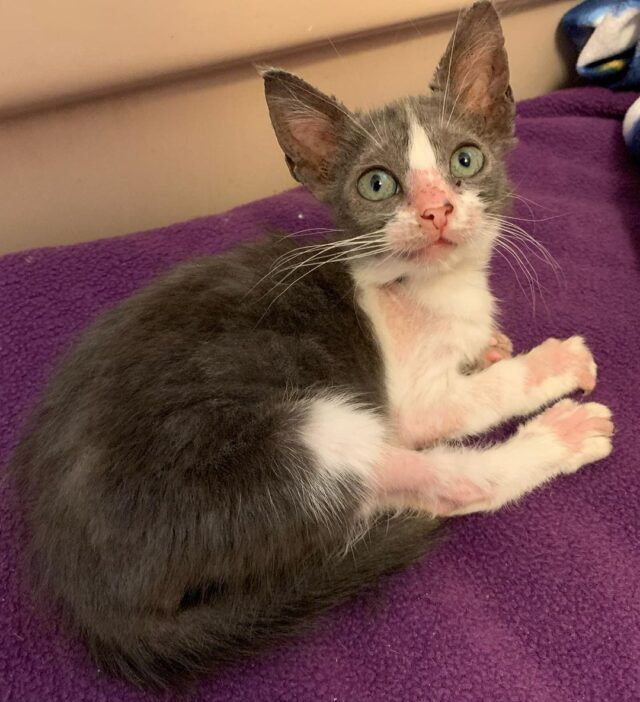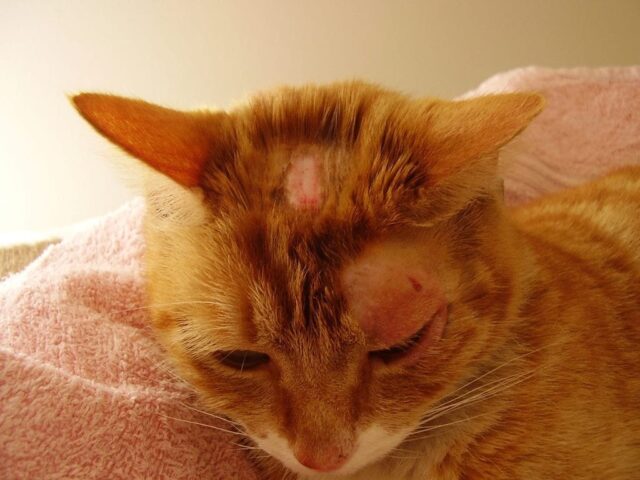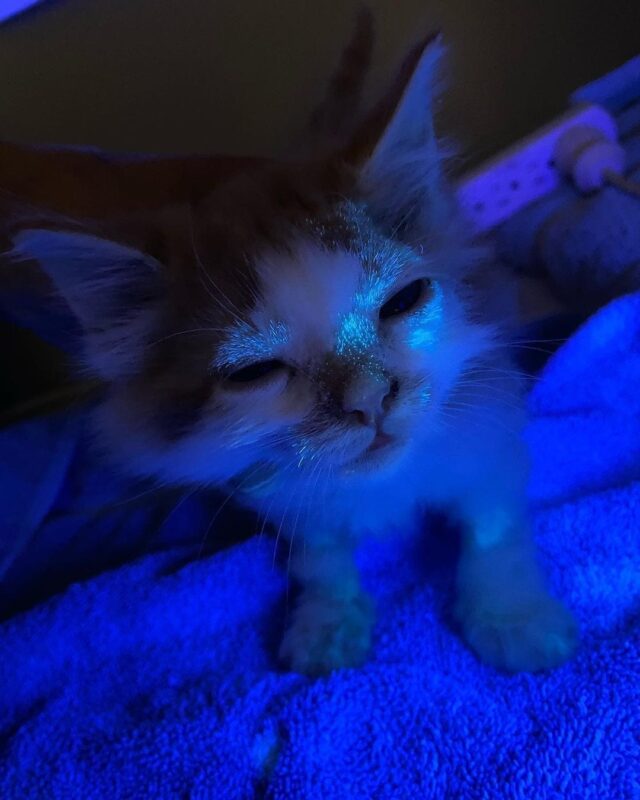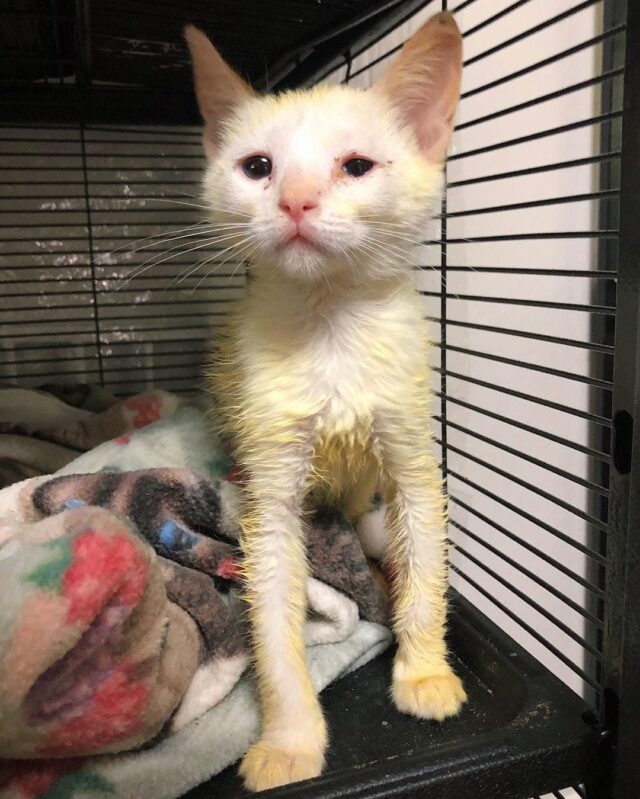Greetings, my pawsome human minions and cat cohorts.
Forrest the cat back again, this time with a scaly subject.
Mom has a friend a couple streets over who fosters kittens. We walk over and visit with them pretty often because mom’s friend thinks I’m an excellent role model for kittens. She’s quite right.
But today, we got a warning to stay away until an all clear is given. You may be wondering why someone doesn’t want my amazingness to come visit, but don’t worry, I’ve not transgressed in anyway. The request is only for my safety as the foster lady has a couple kittens who’ve picked up the DREADED RINGWORM…

Ring Around the Uh-Oh!
You can bet I won’t darken that doorstep until someone shows me blacklight evidence of a ringworm-free zone. Ringworm is highly contagious for cats and humans.
But, did you know ringworm isn’t really a worm at all?
Nope, it’s actually a fungus which causes infection in skin, hair, and nails. The name ‘ringworm’ refers to the fungal rash’s appearance of red welts with a raised circular pattern on the skin. It very much resembles what the skin might look like if indeed a worm had penetrated the top layers. But not all ringworm infections produce the tell-tale ring rash. So, how can you tell if your cat has ringworm?

Look for these ringworm symptoms in cats, according to veterinary experts:
- Hair loss in round patterns
- Broken and prickly hair
- Scaly, crusty skin
- Changes to fur and skin color
- Angry, red skin
- Excessive grooming and scratching
- Infected claws
- Dandruff
If your cat is displaying any of these ringworm infection signs, call your vet.
How to Treat Ringworm
At the vet, the doctor will collect samples of skin and hair to determine what’s going on. They might also break out a UV light to confirm ringworm infection as infected fur will glow a ghastly yellow green.

I’ve seen it once, that glow. At the shelter, a stray cat checked in with crusty fur and staff flipped on a black light over the poor dear. The eerie pall emanating from the cat’s fur sent the staff into a tizzy of containment since feline and human alike were at risk. But they prevailed and all was well.
But I digress…
Once the vet confirms ringworm, cats are prescribed an array of antifungals from oral meds to topical creams. If the itchy, scaly patches appear all over the body, a lime sulfur dip bath may be required. Sounds pretty simple, but keep in mind, clearing up ringworm does not happen fast. Expect a lasting process of 6 weeks or longer.

The fungus responsible for ringworm begins as spores in the soil and once lifted from the dirt, they travel easily, landing to wreak havoc on any they dare touch.
If one of your kitty overlords picks up ringworm, to keep the fungus from completely overwhelming your home, the cats, and your skin, isolate the scaly cat and be sure you preform the deepest house cleaning you’ve ever done. The felines will certainly flick tails over all the vacuuming, but give them treats and tell them it’s for their own good. Don’t tell them I said so though. I hate the vacuum too. I work hard to litter my fur about the house and that infernal machine undoes the work in one fell swoop. In the case of ringworm, however, the vacuum is a necessary evil.
But after you put the loud beast away, remember the most important task of all…
Don’t forget to feed the cat.
Please SHARE to pass on this story to a friend or family member.
